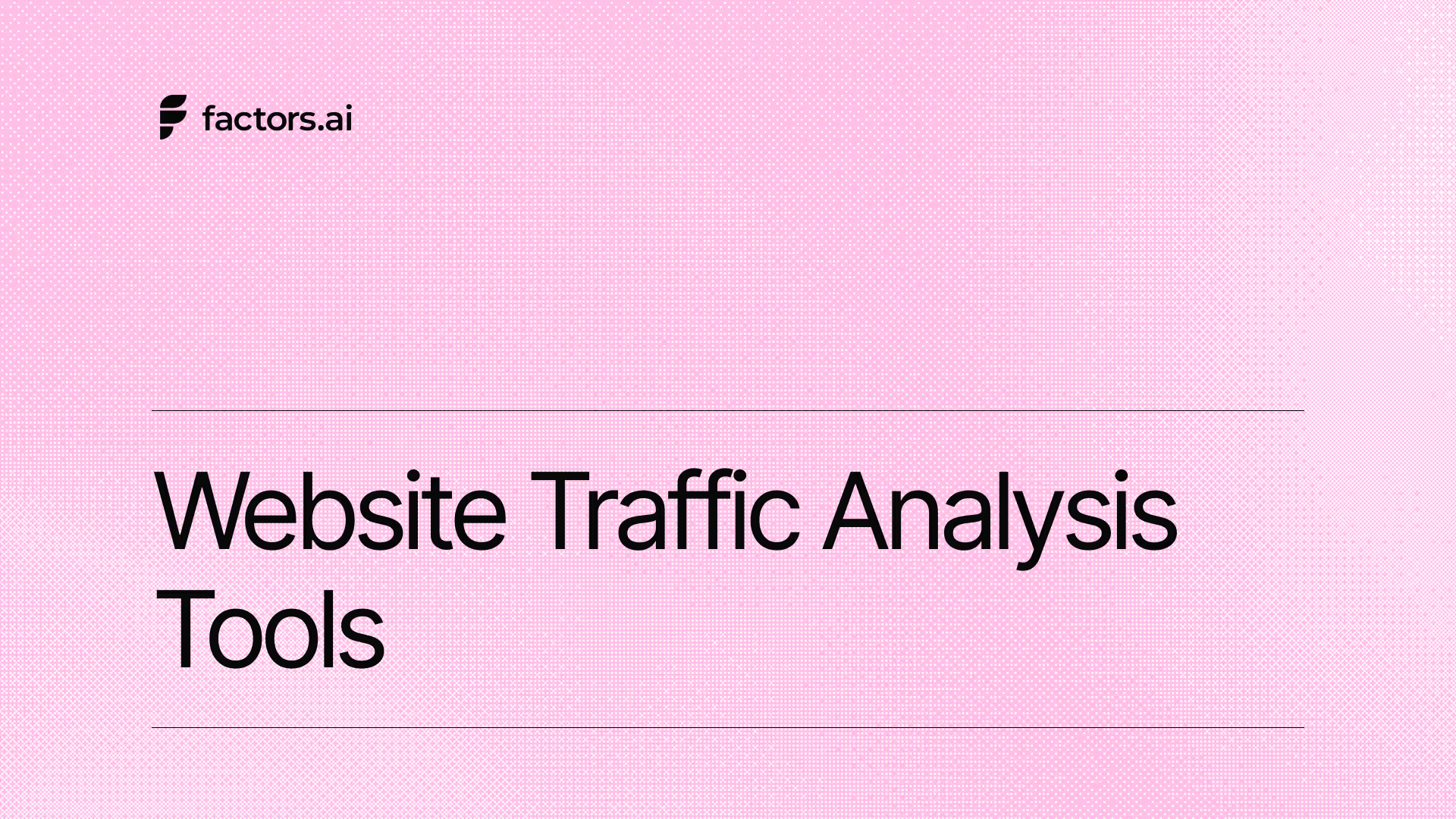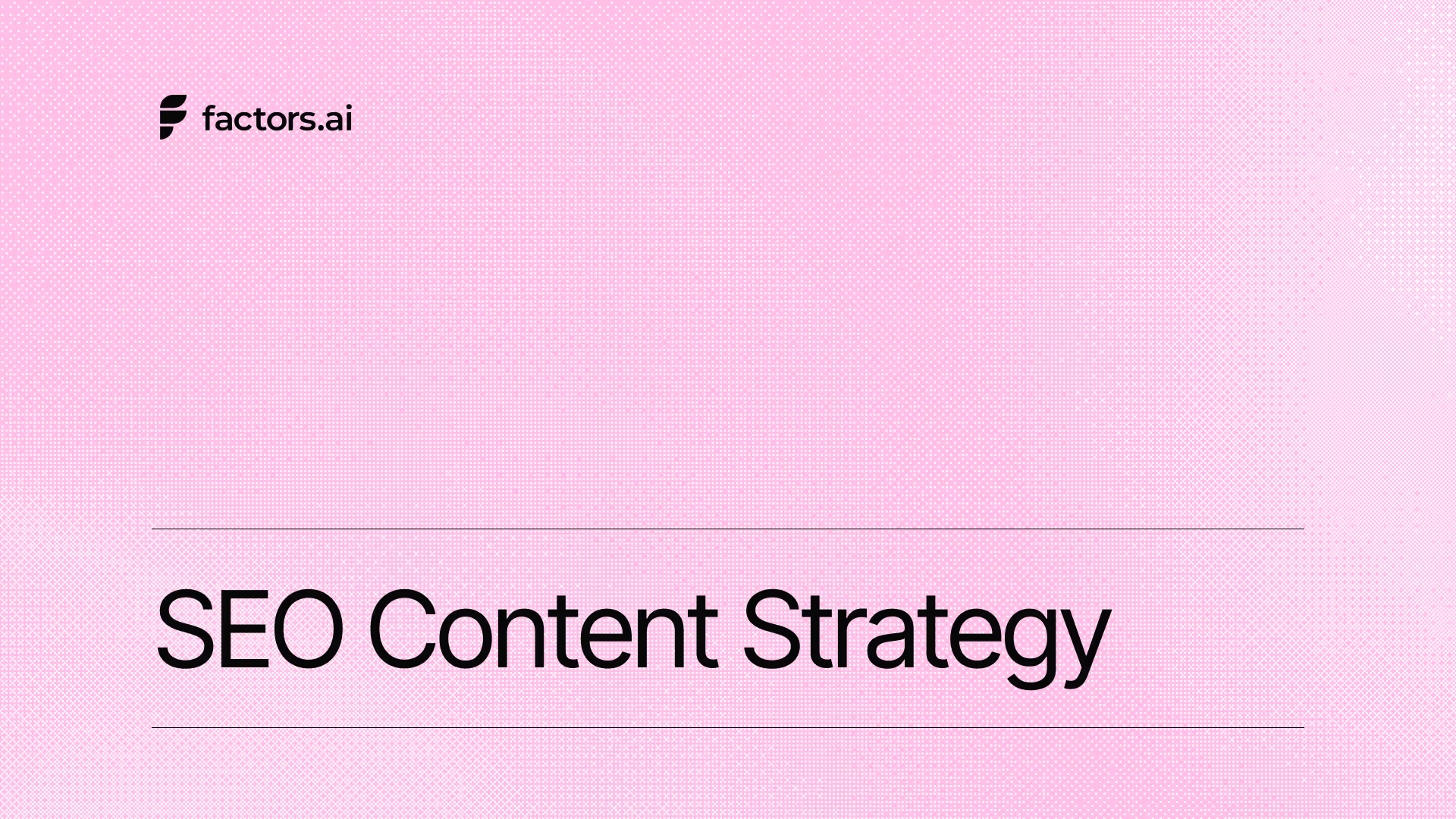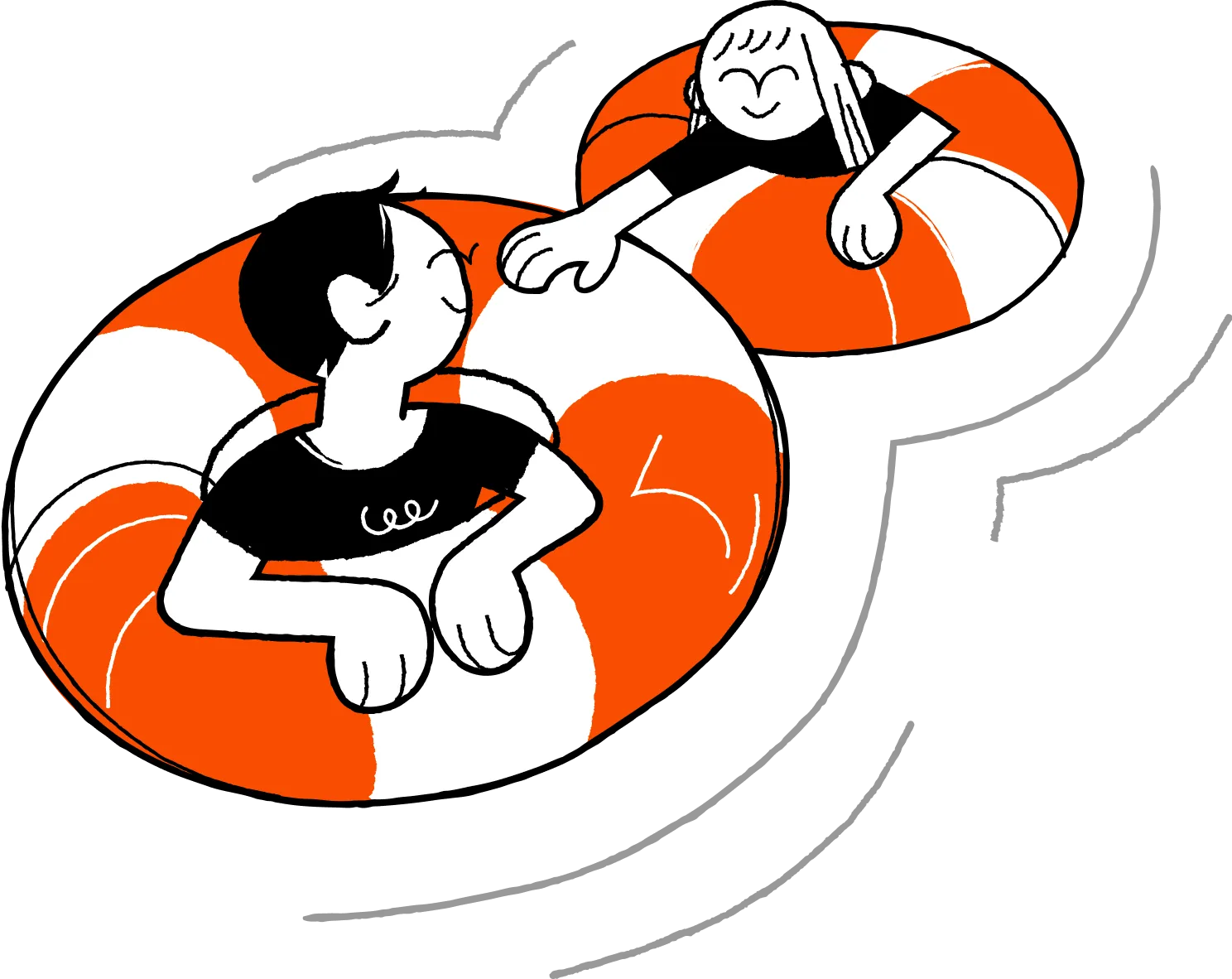B2B Demand Generation Best Practices That Actually Drive Pipeline
Stop chasing leads, start creating pipeline. Find 8 demand gen best practices modern B2B SaaS teams use to align with Sales and drive revenue, not just form fills.
Your dashboard looks great.
Leads are coming in, CPL is ‘on target’, content is shipping, events are happening, paid is always-on.
…and yet when you open the pipeline report, it’s a bit of a ghost town.
Sales is saying: “Yeah… but none of these people are actually buying.” Finance is asking about CAC. Your CEO wants pipeline from demand gen, not form fills.
Sound familiar?
If you work in B2B SaaS marketing, this is THE tension. You’re doing a lot of stuff, but you’re not always sure what’s really moving the marketing-sourced pipeline and revenue.
This guide is a practical playbook to avoid this tension.
We’ll walk through 9 B2B demand generation best practices you can use as an audit checklist, plus simple benchmarks so you can sanity-check CAC payback and funnel performance for a B2B SaaS motion.
PS: If you are confused between ABM and Demand generation, read our blog: Account-Based Marketing vs Demand Generation.
TL;DR
- Narrow your ICP: Vague targeting kills efficiency; define exact firmographics, technographics, triggers, and buyer roles to guide campaigns.
- Build a real funnel: Structure content to support awareness, consideration, and purchase stages; don’t rely on surface-level blog posts or gated PDFs.
- Measure qualified outcomes: Shift away from CPL and toward SQLs, pipeline value, CAC, and payback period for each campaign and channel.
- Align with Sales: Treat Sales as a partner in demand gen; align definitions, build feedback loops, and review pipeline together, not in silos.
So… what is B2B Demand Generation really?
In SaaS, B2B demand generation is everything you do to:
- Create demand to get the right people to understand the problem you solve and why it matters now.
- Capture demand to show up when in-market buyers are actively looking, and turn that intent into pipeline.
It’s not just running paid ads or collecting form fills. It’s the system that takes strangers and turns them into:
- Educated, problem-aware buyers
- Qualified opportunities in your CRM
- Revenue your CFO will actually care about
B2B Demand Generation vs Lead Generation
Here is the difference.
- Lead gen optimizes to collect contact details. Ebook downloads, generic newsletter signups, “get the checklist” gates. You measure leads and CPL.
- Demand gen optimizes to create sales-ready opportunities and revenue. You measure pipeline, SQLs, cost per opportunity, CAC, and payback.
This is what you need to know.
Lead gen fills a database.
Demand gen fills a pipeline.

You need both at some level, but this article is about structuring demand gen so Sales stops complaining and Finance stops squinting at your dashboards.
If you are thinking of diving deep into the differences, here is a blog to read: Lead genration vs Demand generation.
Best practice #1 – Get painfully clear on who you’re actually targeting
If your ICP is “mid-market companies in North America that care about efficiency,”… you don’t have an ICP, you have a wish.
So, start with a razor-sharp Ideal Customer Profile and a clear problem statement.
For SaaS, your ICP should include:
1. Firmographics
- Industry / vertical
- Company size (by revenue and/or employee count)
- Geography (US, NA, EMEA, etc.)
- Go-to-market motion (PLG, sales-led, hybrid)
2. Technographics
- What tools they already use (CRM, MAP, data stack)
- Adjacent tools that signal a good fit (e.g., using Salesforce and HubSpot, using Snowflake, etc.)
3. Buying committee
- Primary champion (Director of Ops, VP Marketing, RevOps, etc.)
- Economic buyer (CFO, CRO, CMO)
- Key blockers (IT, Security, Legal)
4. Trigger events
- Hiring for specific roles
- Raising a funding round
- Moving upmarket or into a new segment
- Tool consolidation or vendor changes

Don’t build this in a vacuum
Sit down with:
- Sales – “Which customers close fastest and pay the most?” “Who do you never want to talk to again?”
- Customer Success – “Who gets value quickly?” “Who churns?”
- RevOps – “What does the data say about win rates and sales cycle by segment?”
Write this down in a doc and keep updating it. Use it to prioritize accounts, channels, and messages.
And yes, you’re allowed to say “No” to segments that consistently waste your time.
Self-audit questions
- Do you have a written ICP doc, or is it tribal knowledge?
- Can everyone describe your “hell no” accounts?
- Are campaigns built around these definitions, or are you still targeting “anyone with a LinkedIn profile”?
Best practice #2 – Turn scattered content into a real demand engine
Most SaaS teams already “do content” like blogs, webinars, ebooks, and a random podcast episode from 2022.
The problem is that it’s rarely structured as a full-funnel demand gen engine.
Let’s fix that.
Map your content to the whole demand gen funnel
Think of it in three stages:
1. Problem/awareness (create demand)
- Problem explainers
- Industry trend breakdowns
- Strong points of view and “here’s what everyone’s getting wrong” content
2. Solution/consideration
- Comparison guides (“build vs buy”, “X vs Y category”)
- Case studies by segment
- Webinars / live sessions with practical walk-throughs
- “How we do X internally” content
3. Purchase/decision (capture demand)
- ROI calculators and business case templates
- Interactive demos or product tours
- Implementation guides
- Security and integration one-pagers
Ask yourself this question: “If someone binge-consumed our content, could they build a business case without ever talking to us?”
If not, you’re leaving pipeline on the table.
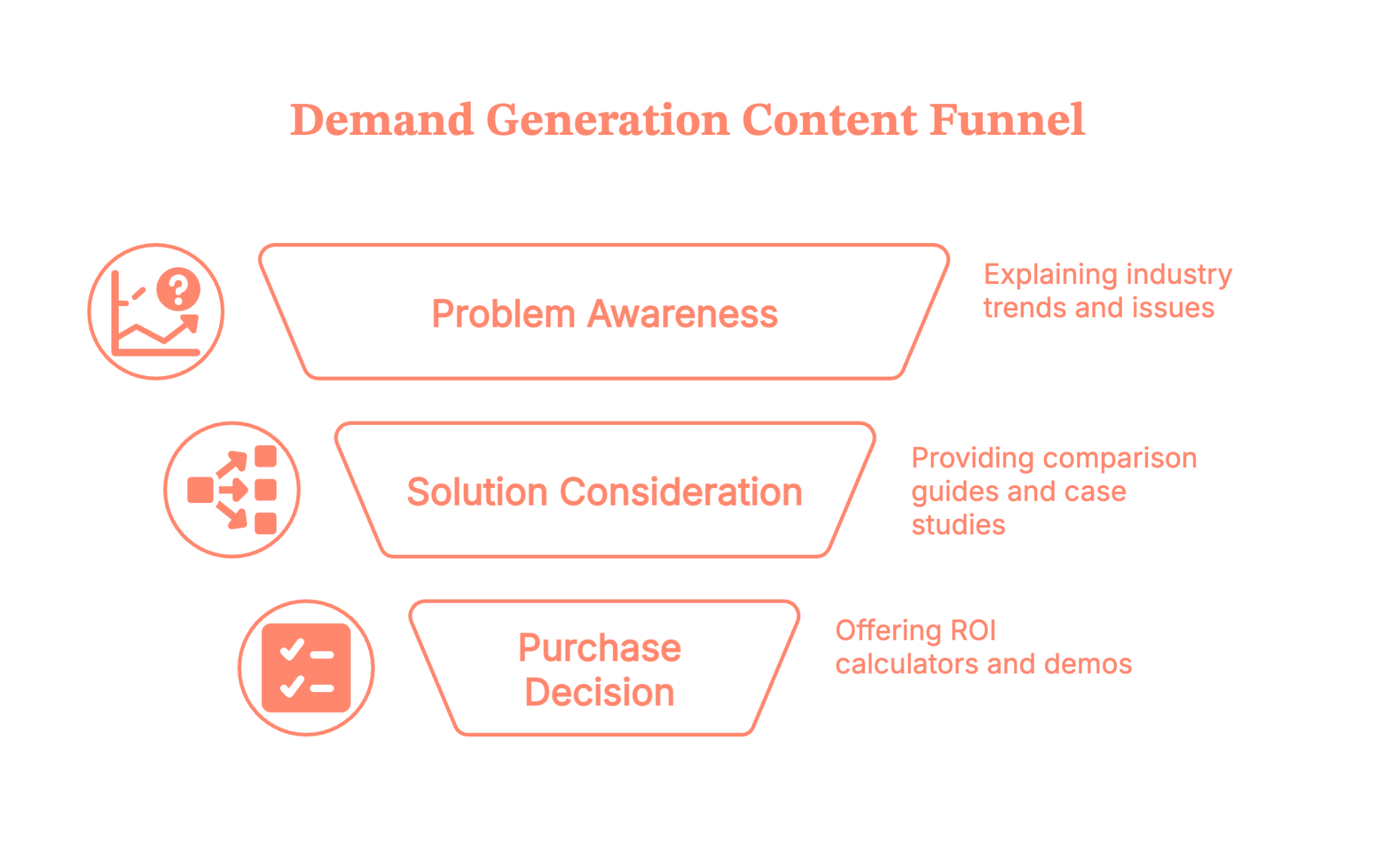
Use content formats that B2B buyers will actually consume
For B2B SaaS, a good mix usually includes:
- Deep blog/article guides (for SEO + education)
- Case studies in multiple formats (PDF, short video, live customer interviews)
- Webinars / live sessions you later chop up for social and email
- Short video clips for LinkedIn and nurture
- Interactive tools like calculators, assessments, and benchmarks
- Original research or mini “state of X” reports
Don’t overcomplicate this. Start by taking 2–3 of your best ideas and expressing each in 3–4 formats.
Gated vs Ungated: When to ask for an email
Here’s a simple SaaS demand generation rule of thumb:
Ungated
- Educational blog posts
- Thought leadership
- Most videos and webinars after the live date
- Frameworks and explainers
Use these to build trust and demand. The more helpful content people see, the more likely they are to raise their hand later.
Gated (sparingly)
- Tools or templates that have clear, immediate value
- Event registrations
- Deep evaluation content like ROI calculators or tailored assessments
Gate it when exchanging an email feels fair and aligned with buyer intent. If you’d be annoyed filling out a form for it, don’t gate it.
Self-audit questions
- Do you have content mapped to each demand gen funnel stage, or is it all top-of-funnel?
- Could a champion build a decent internal business case using only what you’ve published?
- Are you over-gating content that should be helping us create demand?
Best practice #3 – Show up consistently in the channels your buyers actually use
If you rely on a single channel (just Google Ads, just webinars, just events), you’re one algorithm or budget cut away from a dry pipeline.
Effective B2B demand generation tactics use a multi-channel mix that reflects how buying committees actually research and decide.
Core channels that tend to work for B2B SaaS
For B2B SaaS, your short list usually should include the following:
LinkedIn – Your prospects and customers hang out here
- Organic – personal profiles (founders, execs, subject-matter experts), company page
- Paid – Sponsored Content, Conversation Ads, retargeting
Email – always-on channel for nurturing buyers
- Newsletter with genuinely useful content, not just product updates
- Nurture sequences tailored by segment and intent stage
Paid search (Google/Bing) – capture high-intent, in-market buyers
- Capture in-market demand on high-intent keywords
- Carefully separate branded, competitor, and generic category terms
Paid social – amplify reach and reinforce messages
- LinkedIn and Meta (Yes, it works like a charm) for retargeting and lighter awareness
- Display/video to stay visible to target accounts
Communities & events – deepen relationships with buyers
- Niche Slack/Discord groups, peer communities, and industry events
- Webinars, customer roundtables, AMAs
Podcasts / YouTube – if you have the resources
- Great for narrative building and longer-form trust
The key is to pick 2–3 primary channels where your buyers already spend time, then layer in retargeting and content distribution.
Think in multi-touch, not one-hit wonders
Your future customer might:
- See a LinkedIn post
- Hear your founder on a podcast
- Click a paid search ad
- Attend a webinar
- Finally, book a demo via your site
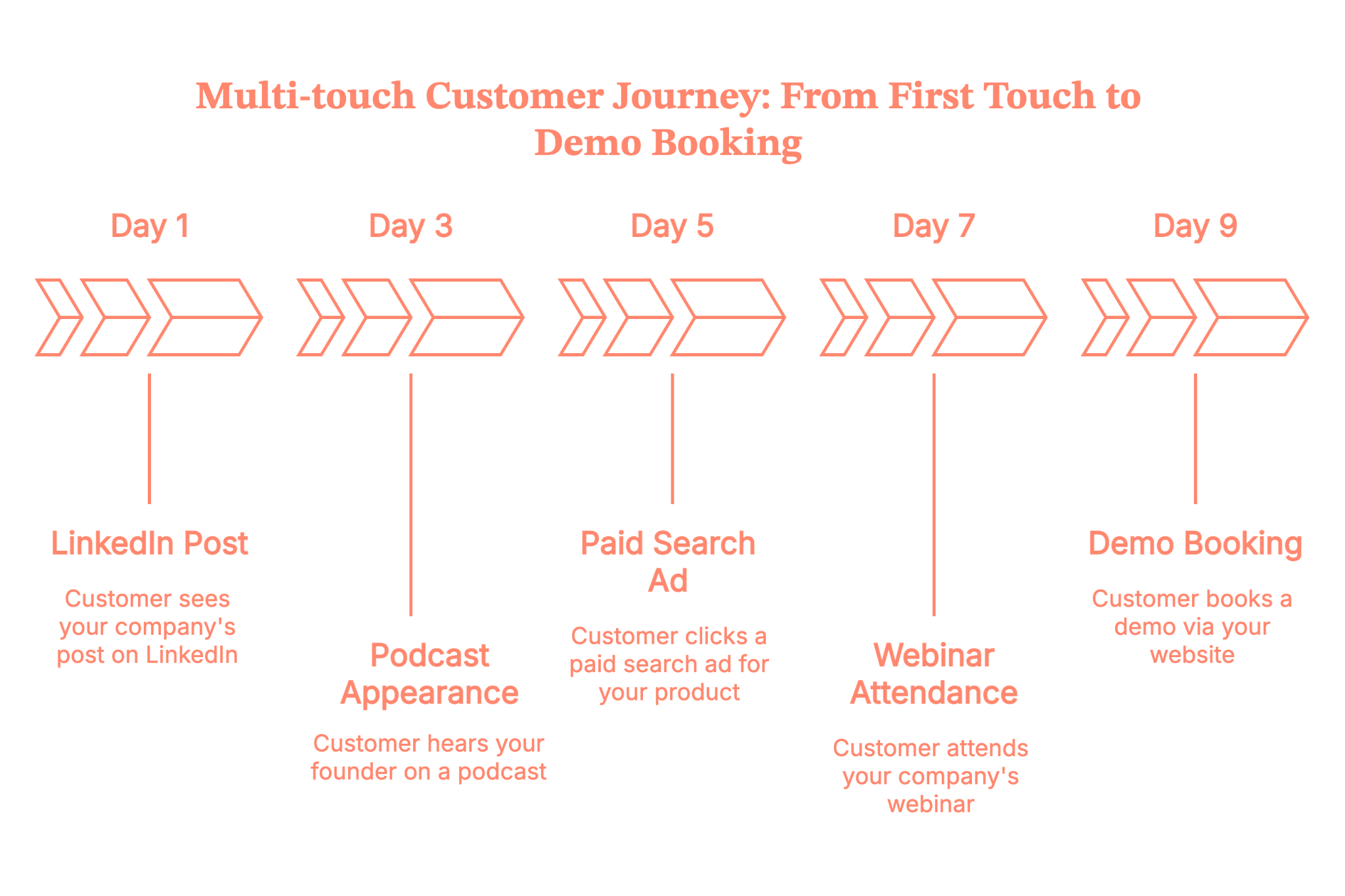
That’s not “attribution hell”, it’s reality. Your job is to build familiarity and trust across multiple touchpoints, not to hope that one ad does all the work.
This is also where multi-touch attribution stops being a nice-to-have and starts being survival gear. To know more about the implementation process, read our blog on Implementing multi-touch attribution.
With Factors.ai, you can actually see how all those touches work together – LinkedIn ads, webinars, website visits, organic visits, outbound emails, etc. This helps you understand which combinations reliably turn into SQLs, opportunities, and revenue, not just clicks.
In fact, Factors.ai has gone one step further and built you features called ‘Account 360’ and ‘Milestones’.
- Account 360 pulls in activity from your site, CRM, and ad platforms, scores accounts, and sends real-time Slack/Teams alerts when high-intent actions happen.
- Milestones visualizes every touch across 1st, 2nd, and 3rd-party intent and shows how accounts move between stages and which interactions actually drive conversions.
Together, they turn multi-touch attribution from guesswork into a clear, account-level story – so you can stop optimising for cheap leads and double down on the plays that consistently create pipeline and closed-won revenue.
Self-audit questions
- Do you know the top 2–3 channels that consistently touch opportunities before they close?
- Are you using retargeting to stay top of mind with people who’ve engaged with high-intent content?
- Are your channels working together, or is each campaign a silo?
Best practice #4 – Use paid media to pour fuel on what already works
Paid can be magical… or it can be the fastest way to light budget on fire.
Trust us, we are not making this up, read more about this on our recently curated LinkedIn B2B Benchmark report of 2025.
Treat paid demand generation as an amplifier, not your primary source of “figuring out what message works”.
Start from proven messages and offers
Before scaling spend, make sure you have:
- Website messaging that already converts some traffic
- At least a couple of offers that Sales LOVES (e.g., assessment, ROI analysis, tailored demo)
- 1–2 content pieces that organic or outbound already prove are resonating
Use those as the starting point for LinkedIn, Google, and Meta campaigns.
Your Google Demand Gen campaigns and other similar campaigns can work for B2B, but:
- They need a significant conversion volume to optimize
- They’re better at cheap traffic than at guaranteed high-intent leads
- You still need a tight audience, a creative strategy, and strong landing pages
If your budget is limited and your CFO is watching every dollar, prioritize:
- Search on high-intent keywords
- LinkedIn targeting your ICP
- Retargeting of engaged visitors and key account lists
Then layer in broader “Demand Gen” style campaigns as you learn.
If your paid budgets are tight, you might want to read our blog on LinkedIn ads targeting mistakes to to avoid costly mistakes.
Optimize for qualified outcomes, not vanity metrics
Shift from:
- Cost per click → cost per qualified demo/cost per opportunity
- Leads → SQLs and opportunity creation
- Shallow forms → clear, honest offers (“Talk to a specialist”, “See how this works with your stack”)
Operationally, that means:
- Dedicated landing pages with one clear call to action
- A/B testing headlines, social proof, and offers
- CRM feedback loops to see which campaigns actually create pipeline and revenue, not just interest
Self-audit questions
- Do you know which paid campaigns produced your last 10 closed-won deals?
- Are you optimizing for the metrics Sales and Finance care about, or just CTR and CPL?
- Are you running any campaigns purely because “everyone else is”?
Best practice #5 – Fix your data, tracking, and conversion paths before scaling harder
You can’t run serious SaaS demand generation on a broken data foundation (well, you can, but you’ll hate it).
Get the basics of tracking right
At a minimum, you need:
- Consistent UTMs on all paid and major owned campaigns
- Tight CRM integration (HubSpot, Salesforce, etc.)
- Clearly defined lead statuses and lifecycle stages
- A simple attribution model (even if it’s just “primary source” + “assist touches” for now)
Don’t chase perfect attribution; chase trustworthy, directional data you can actually act on.
Treat your website like a product
Your website is the core of your demand gen funnel. Start treating it like a conversion product:
- Clear primary CTAs on high-intent pages (Pricing, Product, Integrations, etc.)
- Fast load times, especially on mobile
- Messaging that speaks in your ICP’s language, not internal jargon
- Social proof that matches the segment you care about most
Run ongoing CRO experiments on:
- Headlines and hero sections
- Form length and fields
- CTAs like “Book a demo” vs “See it in action” vs “Talk to an expert”
Even small lifts (say, 10–20% better conversion rate) can meaningfully improve CAC and payback across your demand gen funnel.
Self-audit questions
- Do you trust your source and campaign data in the CRM?
- Can you see which channels tend to create opportunities and revenue, not just traffic?
- When was the last time you ran a real A/B test on your main demo page?
Best practice #6 – Treat Sales like a co-owner of demand, not a downstream complaint box
If Demand Gen and Sales only meet to argue about lead quality, you don’t have a demand engine; you have turf wars.
You want a shared pipeline machine.
Align on definitions first
Make sure you’ve agreed on:
- MQL – If you still use it, define it tightly. Don’t call everyone who downloads a PDF an MQL.
- SQL – Sales-accepted lead that meets ICP and has some buying intent.
- Opportunity – Consensus on what qualifies as a real opportunity
- ICP fit – The non-negotiables for account fit.
Document this and use it to qualify your inbound leads.
Build feedback loops into your process
Set up regular check-ins where you review:
- Which campaigns and offers produce people Sales actually wants to talk to
- Common objections or misconceptions prospects have
- Missing content or tools that Sales wish they had
Add simple mechanisms such as:
- “Reason disqualified” field in CRM
- A Slack channel for quick feedback on new campaigns
- Short post-meeting notes tagged to campaigns
Don’t forget post-lead workflows
- Speed to lead: For inbound demo requests, aim for minutes, not days.
- Routing and lead scoring: Ensure high-intent leads from target accounts go to the right reps, fast.
- Nurture: Not-ready-yet leads shouldn’t just sit in a list. Put them into relevant, helpful nurture based on their segment and behavior.
We know that Sales and marketing are like twins that don’t get along. But read our blog for 6 practical tips to align sales and marketing teams. We promise NO FLUFF.
Self-audit questions
- Can Sales and Marketing point to the same dashboard when you say “pipeline from marketing”?
- Do you have written MQL/SQL/opportunity definitions that Sales actually agreed to?
- Are high-intent demo requests treated like gold or just another task?
Best practice #7 – Measure demand gen by pipeline and revenue, not just activity
Here’s where demand generation for B2B gets real: what you measure is what you optimize for.
If you only track leads and CPL, you will end up optimizing for cheap, low-intent leads.
Core B2B demand generation metrics to track
At a minimum, these are the metrics you should track by channel and campaign:
- SQLs and opportunities created
- Pipeline generated (value of opportunities)
- Win rate by channel/segment
- Sales cycle length by channel/segment
- Cost per SQL / cost per opportunity
- Customer Acquisition Cost (CAC) by channel
- CAC payback period
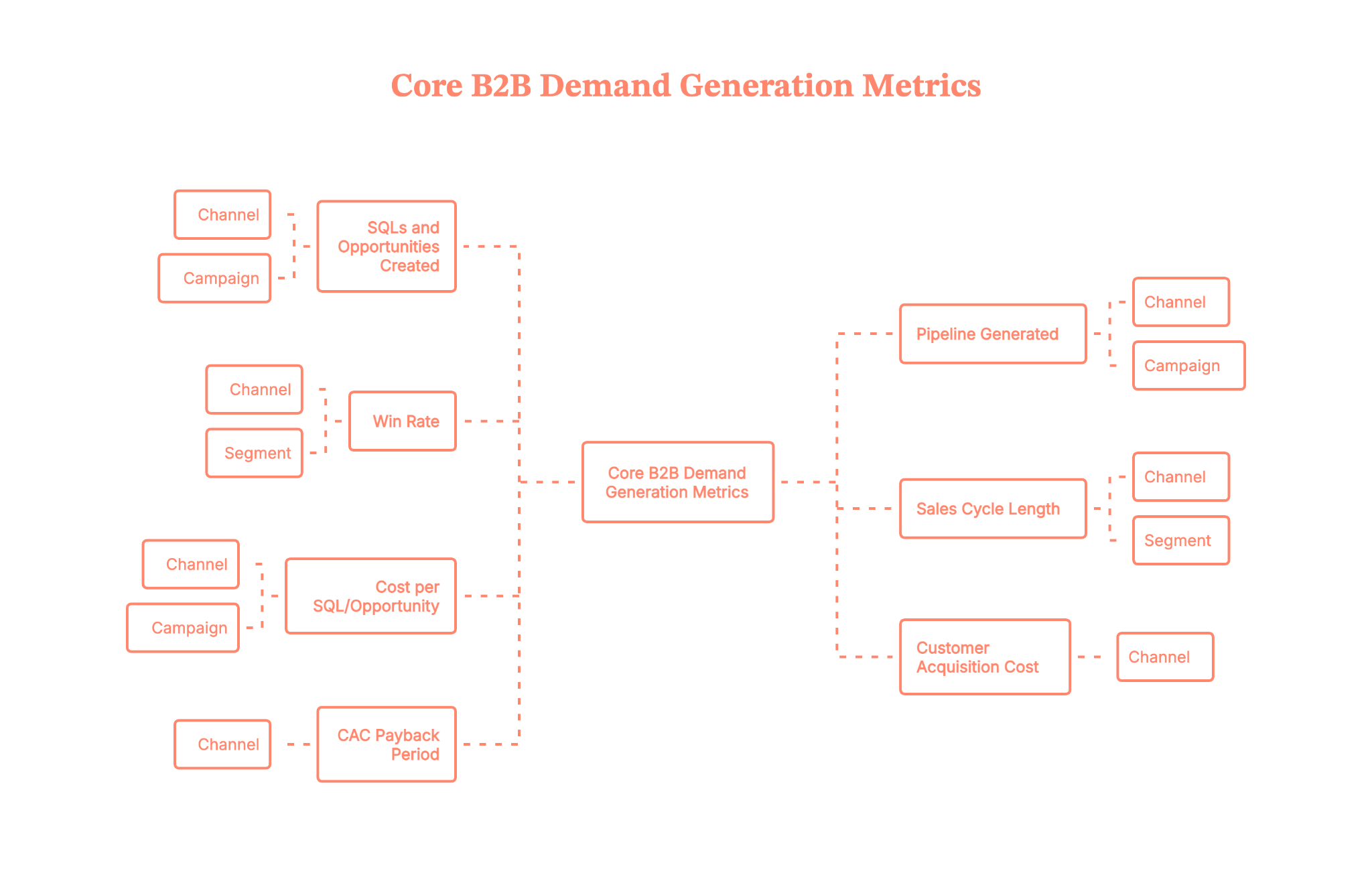
What “good” can look like for B2B SaaS (directionally)
This varies by ACV and segment, but as a directional sense:
- Marketing-sourced pipeline often aims for 20–50%+ of total new pipeline (higher for earlier-stage companies).
- Reasonable CAC payback for many B2B SaaS businesses is 12–24 months, with best-in-class often under 12 months, and some enterprise motions accepting longer.
- SQL → Opportunity conversion might sit around 20–40%, depending on how strict your SQL definition is.
Use these as ranges, not strict rules. The key is improving your own numbers over time.
Build a simple revenue-focused dashboard
On a monthly or a weekly basis, track the following:
- Pipeline created by the source and campaign
- Closed-won revenue by source
- CAC/CAC payback by channel (even if approximate)
- Top 5 campaigns that influenced closed-won deals
This is how you turn “marketing is a cost center” into “marketing is a predictable growth lever”.
Self-audit questions
- Do you know which campaigns created last quarter’s pipeline, not just last quarter’s leads?
- Can you estimate CAC and payback period by major channel?
- Are you reviewing these numbers with Sales and leadership on a recurring basis?
Best practice #8 – Run experiments and document your own SaaS demand gen strategies
Here’s the uncomfortable truth: all the B2B demand generation best practices in the world won’t perfectly fit your product, price point, and sales cycle.
You need to test and codify what works for you.
Treat campaigns like experiments
For each experiment, define:
- Hypothesis – “We believe offering an ROI assessment to director-level ops leaders will increase demo-to-opportunity conversion.”
- What you’ll change – offer, channel, creative, audience, or funnel step.
- Success metrics – SQLs, opportunities, pipeline, or efficiency (e.g., cost per opportunity).
- Timeframe and sample size – give it enough time and volume to be statistically useful.
Run a manageable number of experiments per quarter (for example, 3–5 meaningful ones), and actually review the results.
Build an internal “playbook” doc. PS: It should be a living doc with
- Your ideal customer profile(s)
- Proven offers by segment and funnel stage
- Top-performing campaigns with examples of creative and landing pages
- Experiments that failed and what you learned
This becomes onboarding gold for new team members and a guardrail against “we tried that already” amnesia.
Self-audit questions
- Do you have a list of our top 5 “always on” plays that reliably drive pipeline?
- Are you running structured experiments, or just trying random ideas?
- Is there a central doc where all of this lives?
Stitching it all together: a simple SaaS Demand Gen framework
Let’s make this practical. Here’s a simple 3-step loop you can use to structure your demand generation strategy.
1) Clarify: who, what, and why now
- ICP and anti-ICP are clearly defined
- Core problems and pains, in the customer’s language
- Key use cases and value propositions
- Segmentation by ACV/segment where relevant
2) Create & distribute: content + channels
- Full-funnel content mapped to awareness, consideration, and decision
- Always-on, helpful content distributed via LinkedIn, email, and communities
- Paid campaigns that amplify what’s already resonating
- Website and landing pages tuned for clarity and conversion
3) Capture & measure: offers, tracking, and pipeline
- Strong, honest offers for high-intent buyers
- Clean tracking from click → CRM → opportunity → revenue
- Regular review of pipeline, CAC, and payback by channel
- Feedback loops with Sales and CS to refine targeting and messaging
Run this loop every quarter. Improve one or two parts at a time. You’ll be surprised how fast the engine compounds.
B2B SaaS demand generation FAQs
Q. What are the most effective B2B demand gen channels for SaaS?
For most SaaS teams, the usual top performers are LinkedIn (organic + paid), paid search, email, and website content. Many also get strong results from niche communities and events. The best channels are the ones that reliably touch opportunities before they close, not just the ones that generate the most cheap leads.
Q. How long does it take to see results from B2B demand generation?
You can see early signals (traffic, engagement, SQLs) in a few weeks, but meaningful pipeline and revenue usually take 3–6 months to show up, and 6–12 months to really stabilize. Longer sales cycles and higher ACVs stretch that out. This is why you want a mix of quick-win capture tactics and longer-term demand creation.
Q. How much budget should I allocate to B2B demand gen?
There’s no magic number, but many SaaS companies allocate a significant portion of their marketing budget to demand creation and capture across content, paid, and events. Work backwards from your pipeline and revenue targets, your CAC/payback goals, and your current conversion rates to estimate what you can afford to spend per opportunity and per customer.
Q. Do Google’s “Demand Gen” campaigns work for B2B?
They can, but they’re not a silver bullet. They usually work best when you already have good creative, clear ICP, and enough conversions for the algorithm to learn from. If your budget is tighter, prioritize high-intent search and LinkedIn before throwing a lot of spend at broad Demand Gen campaigns.
Q. How do I know if my demand gen is working?
Look at pipeline and revenue trends, not just leads. If you’re seeing more SQLs, more opportunities, and more closed-won deals from your target segments at an acceptable CAC and payback, your demand gen is working. If leads are up but pipeline and revenue aren’t moving, something’s broken in targeting, messaging, or qualification.
See how Factors can 2x your ROI
Boost your LinkedIn ROI in no time using data-driven insights
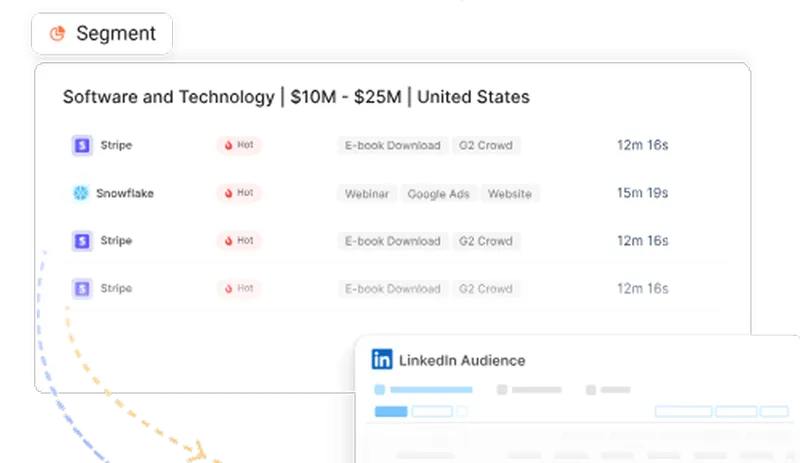
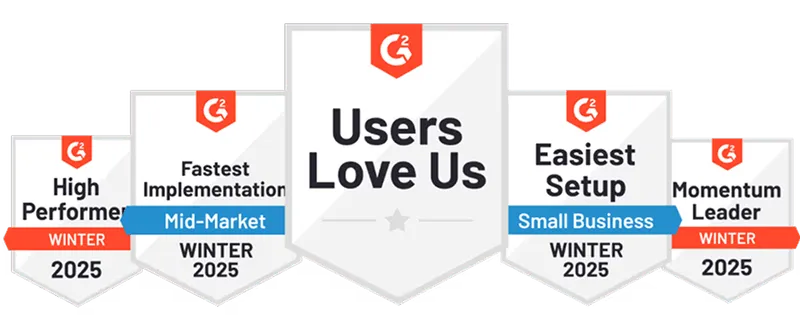
See Factors in action.
Schedule a personalized demo or sign up to get started for free
LinkedIn Marketing Partner
GDPR & SOC2 Type II
.svg)

.avif)





